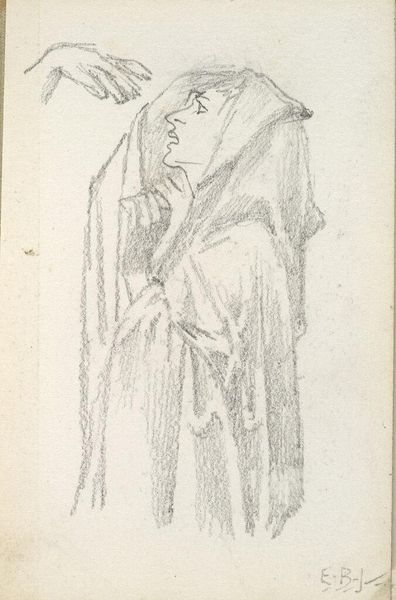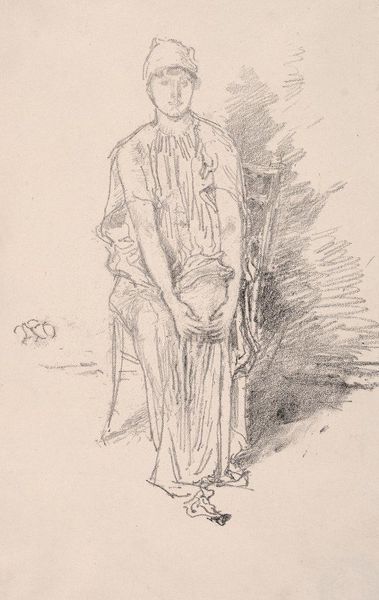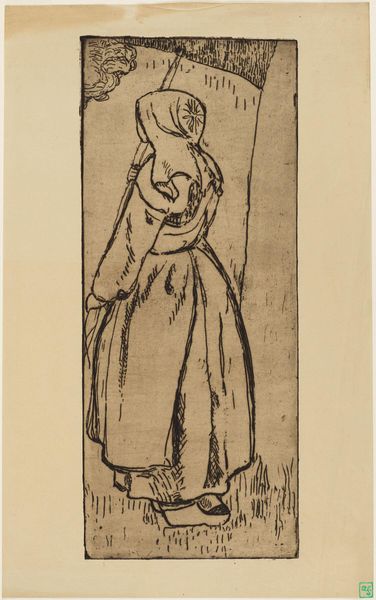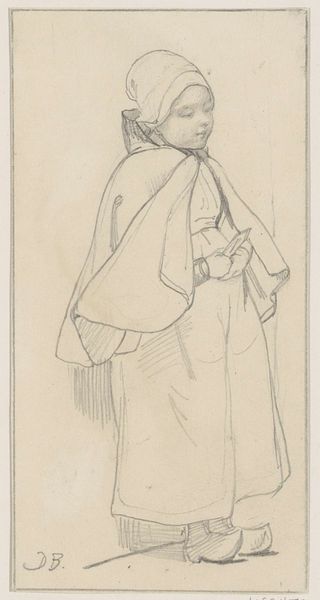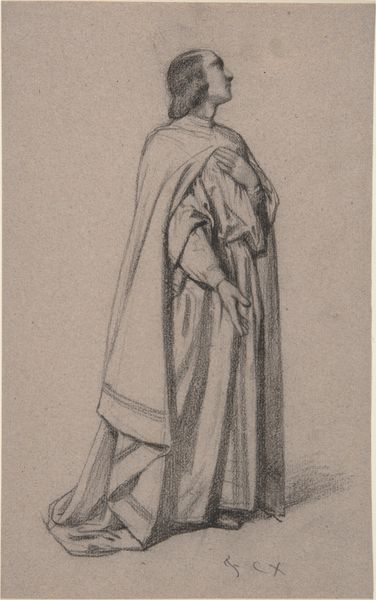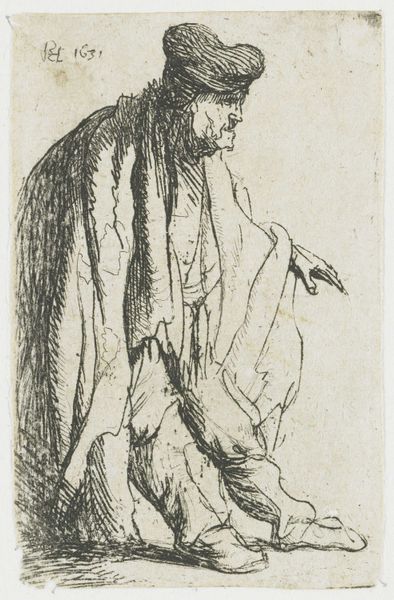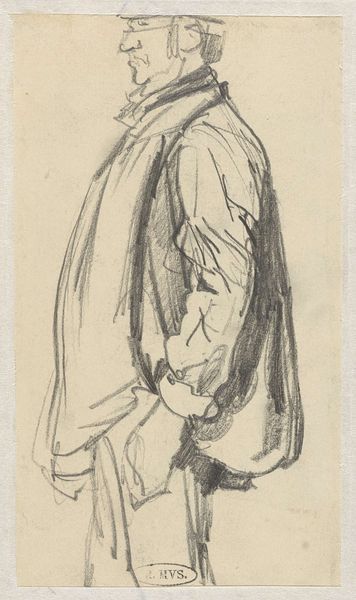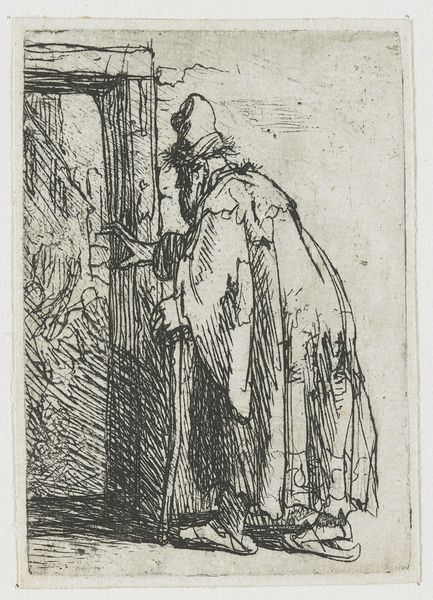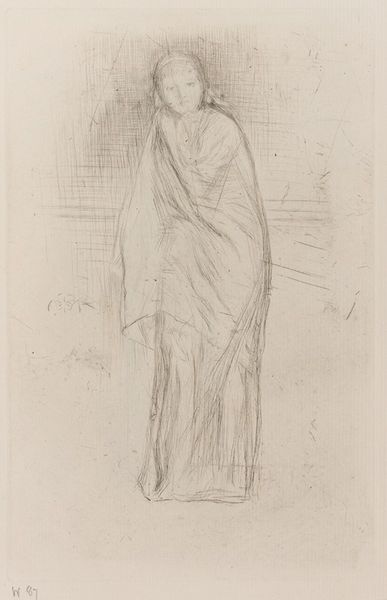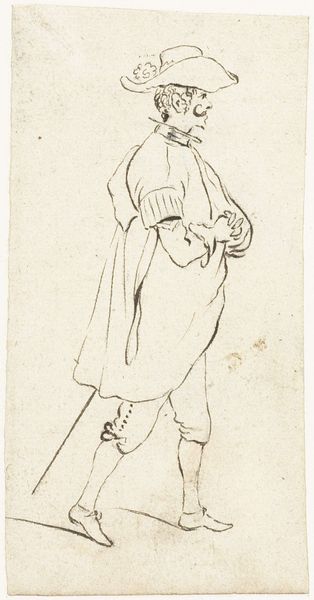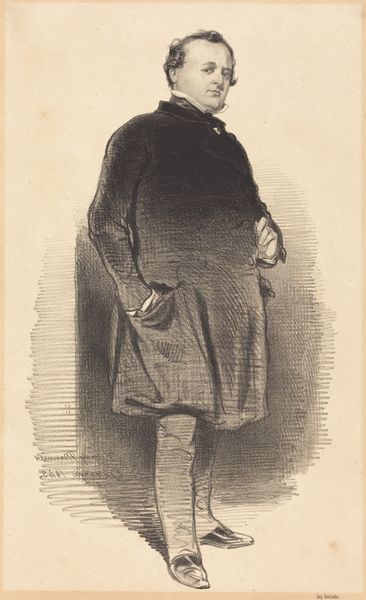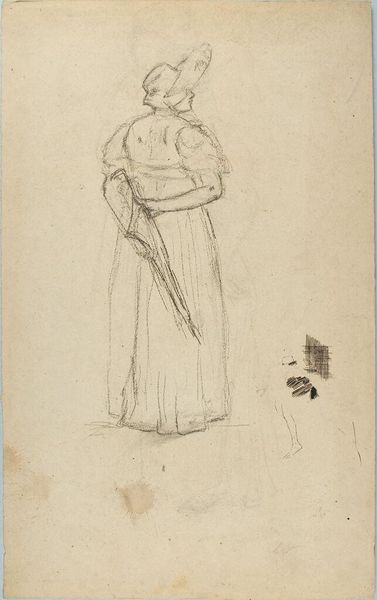
drawing, print, paper, pencil, chalk, graphite, charcoal
#
portrait
#
drawing
# print
#
pencil sketch
#
landscape
#
figuration
#
paper
#
plant
#
pencil
#
chalk
#
graphite
#
charcoal
Dimensions: 342 × 204 mm
Copyright: Public Domain
Curator: Jean-François Millet created this delicate pencil, graphite, chalk, and charcoal drawing entitled "Shepherdess Leaning Against a Tree" sometime between 1857 and 1860. It resides here at The Art Institute of Chicago. Editor: What strikes me immediately is the sheer melancholy of the piece. The figure is cloaked, almost consumed by the dark shading of her garb, and the minimal background only amplifies the somber mood. Curator: The composition certainly guides our interpretation. Observe how Millet uses the stark verticality of both the shepherdess and the tree to create a sense of confinement. It echoes prevailing attitudes about women’s restricted roles in rural 19th-century French society. Editor: Interesting, because I am reading the formal aspects of her cloak less as restrictive, and more as a shelter. Perhaps the shepherdess seeks refuge, a deliberate self-removal from the harsh realities and potential exploitations facing rural working women. Her solitude is a chosen state. Curator: I appreciate your reading, but it cannot be extracted from socio-historical contexts that forced women into harsh rural labor and isolation, shaping representations of female figures in art and beyond. And consider how the very application of the charcoal almost seems to press her down… Editor: You see subjugation in the dense lines; I see them building a sort of armored grace. It is about the dialectic, I believe. Think of her stance, propped on her staff against a tree - each are simple forms, but create the complex semiotics of the drawing's story. I would be very interested to have it studied through such frameworks. Curator: It's a valuable point that while a Formalist reading might give weight to those structures, what they communicate regarding power relations within 19th century agricultural settings remains inescapable in our analysis. These power relationships define the visual narratives, especially the place of female labor. Editor: Perhaps these two perspectives together underscore the inherent ambiguity of art. It invites us to scrutinize how visual elements reflect, refract, and sometimes actively resist historical contexts, even the painful ones. Curator: It makes me wonder if there are new interpretations waiting in future perspectives as well.
Comments
No comments
Be the first to comment and join the conversation on the ultimate creative platform.


